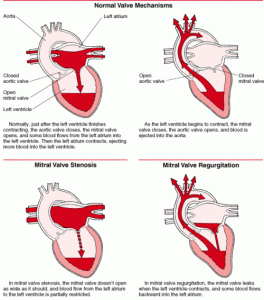When is Heart Surgery is Required?
 Undergoing heart surgery is a big decision, and sometimes it’s the best choice for a patient who is confronted with a heart condition. If your doctor has recommended heart surgery, it’s because they have already measured your options and taken into account your risks and benefits and have concluded that surgery will provide the best outcome. So, How Do Physicians Determine Whether Heart Surgery is Required? Let’s take a look at some of the tools that help determine if heart surgery is your best option.
Undergoing heart surgery is a big decision, and sometimes it’s the best choice for a patient who is confronted with a heart condition. If your doctor has recommended heart surgery, it’s because they have already measured your options and taken into account your risks and benefits and have concluded that surgery will provide the best outcome. So, How Do Physicians Determine Whether Heart Surgery is Required? Let’s take a look at some of the tools that help determine if heart surgery is your best option.
Echo (Echocardiogram)
An electrocardiogram is a type of ultrasound performed on your heart that allows the doctor to see how your heart valves and muscles are functions. They will also have the ability to see how your blood is flowing through your heart.
ECG (Electrocardiogram)
This fast and painless exam involves connecting electrodes to your torso in order to measure the electrical activity going on in your heart. This is an excellent way of diagnosing conditions like arrhythmias and possible past heart attacks where the test would show a disruption in electrical activity.
Chest X-Rays
X-rays are a fast way for your physician to see the shape and size of your heart, and many cardiovascular problems can be diagnosed using a chest x-ray.
Stress Test
A stress test is a monitored test that gives your doctor an idea of how your heart is functioning by using exercise or drugs to perform the test. The stress test will show if your blood flow is adequate, identify any abnormal heart rhythms, and determine if your heart medication is effective.
Cardiac MRI
A Cardiac MRI scanner utilizes a large magnet to get more details of your heart through images that are obtained using x-rays. Your doctor could examine the thickness, shape, and size of your heart. Many medical facilities have open-sided MRI scanners to make the process more comfortable and easier.
CT Scan
The most commonly used test to check for possible problems with your aorta is a CT scan. Your physician might administer a contrast dye before your procedure to see how your blood is flowing through your heart and aorta. An x-ray machine will pick up the colour, which helps doctors see the information clearly.
Cardiac Catheterization
The cardiac catheterization procedure consists of inserting a thin tube into an artery in your neck, arm, or groin to observe your blood flow. It is also used to figure out the location and severity of atherosclerosis. This procedure is commonly performed under local anesthetic and lasts anywhere from 30 to 60 minutes. All of these tests should be ordered by your referring doctor before your appointment with a cardiovascular surgeon. That’s the best way for the doctor to make sure all of the information has been provided to make an appropriate recommendation.

